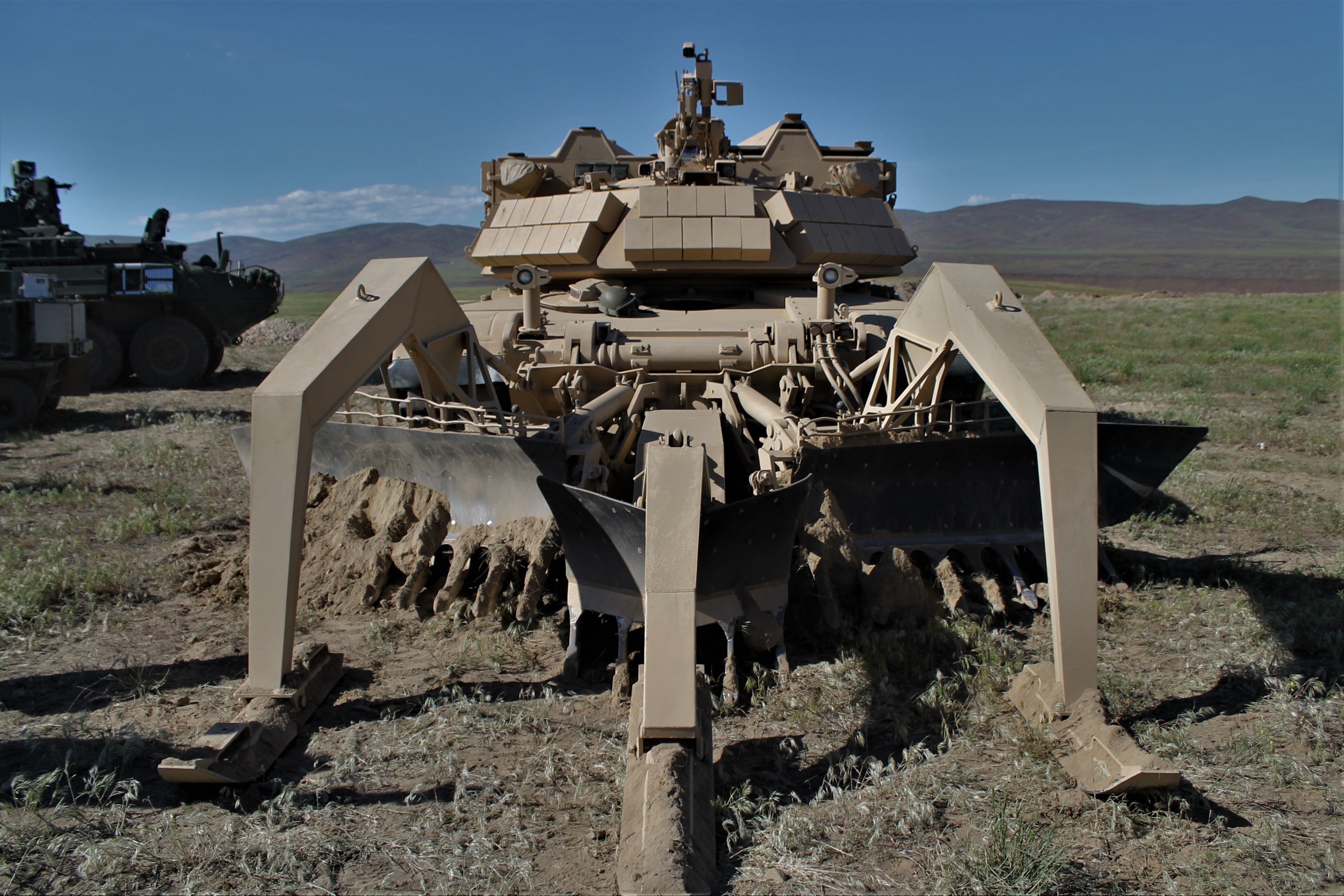WASHINGTON — The U.S. Army is gearing up for a second try at an initial operational test for its new Joint Assault Bridge, or JAB, in June after struggling through its first attempt in April 2019 due to issues related to the hydraulic system and training.
A report released this month from the Pentagon’s chief weapons tester revealed the JAB, during its first initial operational test and evaluation (IOT&E) held at Fort Bliss, Texas, experienced poor system reliability and limited availability. “The result was insufficient data for [the director of operational test and evaluation] DOT&E to determine operational effectiveness,” the report stated.
“The issues we found were primarily related to the hydraulic system or training issues,” Steve Rienstra, the Army’s product manager for bridging within the Program Executive Office Combat Support & Combat Service Support, told Defense News in a Feb. 6 interview.
The new JAB capability is intended to be a significant enhancement to the maneuverability of the Army’s combat forces, particularly armored brigade combat teams with M1 Abrams Tanks and Bradley Infantry Fighting Vehicles.
“The JAB is faster, more survivable and more sustainable than its predecessor,” the M48/M60 chassis-based Armored Vehicle Launched Brigade system resident in the armored brigade combat teams’ brigade engineer battalions and in mobility augmentation companies supporting the teams’ operations, Rienstra said.
Leonardo DRS is the prime contractor for the JAB, which is built on top of an M1A1 Abrams tank chassis.
Since the IOT&E, the Army has focused “a tremendous amount of effort” to improve the hydraulic system and training, Rienstra said.
RELATED

Leonardo DRS has “done a really exceptional job of doing a comprehensive deep dive into the root cause analysis so when you see hydraulic lines that are failing, it’s really on the manufacturer to figure that out,” he said. “They went back through, came up with an aggressive list of design and production corrections, and they’ve implemented that on all the systems that are going forward.”
The new and improved systems are going to be tested in June in a second attempt at an IOT&E at Fort Riley, Kansas, Rienstra said. “The systems that are going to the field will all be much more capable from a durability perspective based on improved hydraulics,” he said.
And testing ahead of the big event has shown promise that the IOT&E will have different results. The Army brought in soldiers with experience on legacy equipment to support the tests. After 1,000 miles of operation and more than 200 bridge launches and retrievals, the systems “did not have a single hydraulic failure,” Rienstra said.
The service is also working to revamp its training ahead of the second IOT&E after realizing that the maintainers using the equipment not only needed training on the new bridge launch mechanism, but also on the M1A1 Abrams chassis. Maintainers are normally familiar with the M1A2, which has differences, according to Rienstra.
“We’ve increased operator new equipment training, field-level maintenance new equipment training, and doctrine, tactics and techniques training where we actually integrate this with other systems, and we’ve increased that by about 30 percent time-wise,” Rienstra said.
RELATED

The Army is in the process of conducting live-fire testing, of which Rienstra would not provide details. The service is also conducting its last preparatory event out at Yuma Proving Ground, Arizona.
Equipment will be moved beginning in March to Fort Riley, and training will take place over April and May. The actual test will happen over the course of three weeks in June, Rienstra said.
The service is pushing to be able to keep the JAB systems within the 1st Engineer Battalion of the 1st Infantry Division as well as get a materiel release following the IOT&E.
While the DOT&E report makes the IOT&E “look like bad news,” the extra year of testing and improvement is going to result in a “much improved product,” Rienstra said.
Jen Judson is an award-winning journalist covering land warfare for Defense News. She has also worked for Politico and Inside Defense. She holds a Master of Science degree in journalism from Boston University and a Bachelor of Arts degree from Kenyon College.








